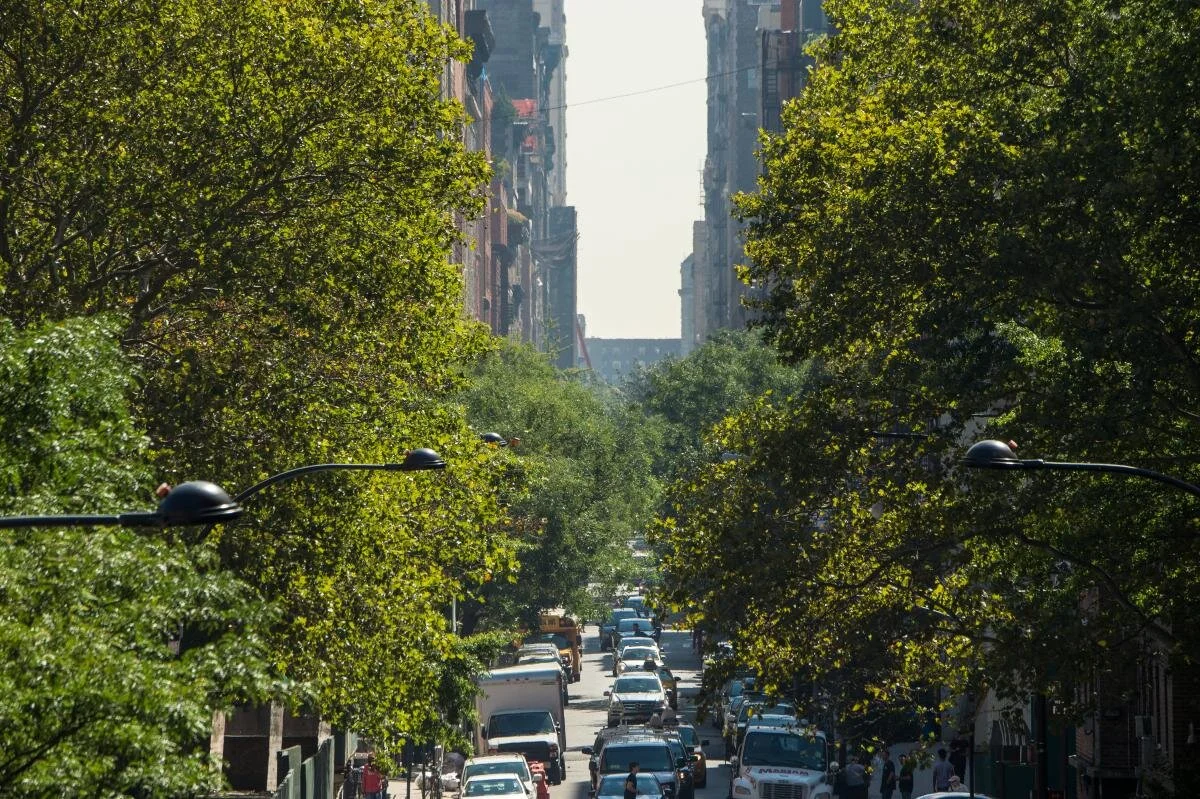There has recently been a lot of discussion on the impact planting trees can have to mitigate climate change, but have you ever wondered how climate change is affecting trees? Three critical aspects of climate change that are impacting trees are the rising concentration of carbon dioxide, warming temperatures, and the increase in extreme weather events. These factors impact a tree’s growth, health, and ultimately, its chance of survival.
Plants rely on carbon dioxide (CO2) for photosynthesis, which is why one may think that an increase in its atmospheric levels will increase the productivity of trees. However, research shows that although rising CO2 concentrations may initially benefit plants, the benefits decrease past a certain threshold that results in reduced productivity. This threshold is reached once the rate of rising temperatures exceeds the rate of rising CO2 concentrations. This is important to note considering that current warm temperatures already cause adverse effects towards trees.
A study conducted in Central Europe found that rising global temperatures have caused trees to experience longer growing seasons. Although these longer growing seasons are allowing trees to grow quicker, the wood is also becoming weaker. It was found that since 1870 the wood density of four tree species has decreased by 8-12% due to warming temperatures and changing nitrogen levels in the soil. Samples taken from these species also showed that their CO2 content decreased by 50%, further showing trees can only uptake a certain amount of CO2 past a certain threshold. Warming temperatures can also alter the seasonal life cycles of harmful insects and enable them to develop quicker and travel further to cause damage to trees as well. The weakening of wood caused by warming temperatures can also allow wood to break more easily and be susceptible to damage from extreme weather events like storms and fires.
Warmer global temperatures cause a delayed fall - thus a longer growing season for trees (Harvard Magazine, 2019).
Extreme weather events like wildfires and floods have caused severe damage to trees in the past and are projected to continue to do so. In 2020 alone, 10.3 million acres of forest in the U.S. were consumed by wildfires. It is predicted that the intensity and frequency of wildfires, as well as storms and hurricanes, will only increase with climate change. This will result in the loss of more forests, as well as a subsequent increase in the amount of CO2 that is released into the atmosphere during wildfires and through decay of trees.Droughts can also increase the risk of wildfires and reduce a tree’s ability to produce sap which takes away its protection against harmful insects like pine beetles.
The 2014 megafires in Canada’s Northwest Territories scorched more than 7 million acres of spruce, pine, aspen and other evergreen trees, releasing 103 million tons of carbon into the atmosphere (NASA / Xanthe Walker, Center for Ecosystem Science and Society at Northern Arizona University).
“While planting trees does help mitigate climate change, it is important to understand that just the action of planting trees alone will not reverse the effects of climate change.”
Climate change has brought forth altered precipitation patterns as well as extreme weather events that can damage trees and put stress on them to adapt. Tree lines, which are determined by environmental conditions and represent the edge of a habitat where trees can grow, will change as a result of climate change. If trees can no longer thrive in the changed environment they will die. While planting trees does help mitigate climate change it is important to understand that just the action of planting trees alone will not reverse the effects of climate change. We need to all work towards living a more sustainable life and put pressure on corporations and the government to move towards a more sustainable future, not only for us, but also for the health of our trees.
Sources:
“Climate Impacts on Forests.” EPA, Environmental Protection Agency, 22 Dec. 2016. 19january2017snapshot.epa.gov/climate-impacts/climate-impacts-forests_.html.
“Facts + Statistics: Wildfires.” III, www.iii.org/fact-statistic/facts-statistics-wildfires.
Grace, John, et al. “Impacts of Climate Change on the Tree Line.” Annals of Botany, Oxford University Press, Oct. 2002. www.ncbi.nlm.nih.gov/pmc/articles/PMC4240388/.
Harvey, Chelsea. “Balance Between CO 2 and Warming Means Life or Death for Trees.” Scientific American, Scientific American, 28 Nov. 2019. www.scientificamerican.com/article/balance-between-co2-and-warming-means-life-or-death-for-trees/.
Lakshmi SupriyaAug. 22, 2018, et al. “Climate Change Is Making Trees Bigger, but Weaker.” Science, 22 Aug. 2018. www.sciencemag.org/news/2018/08/climate-change-making-trees-bigger-weaker.



